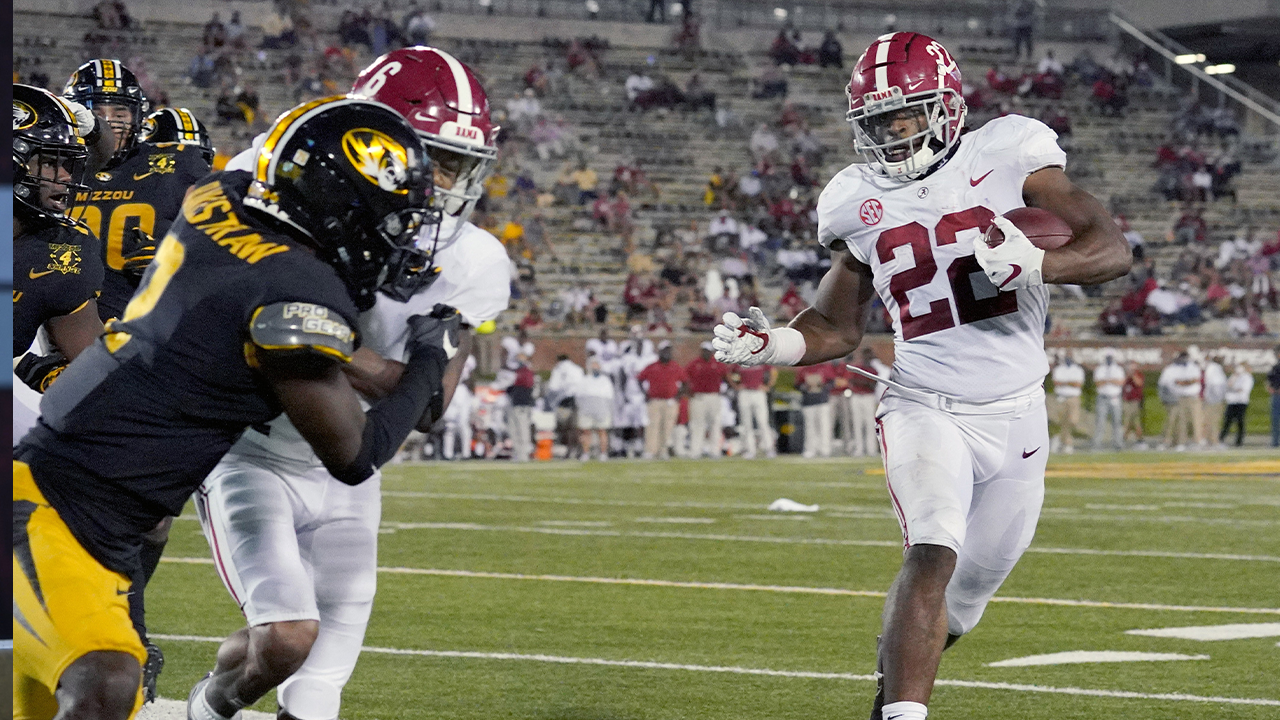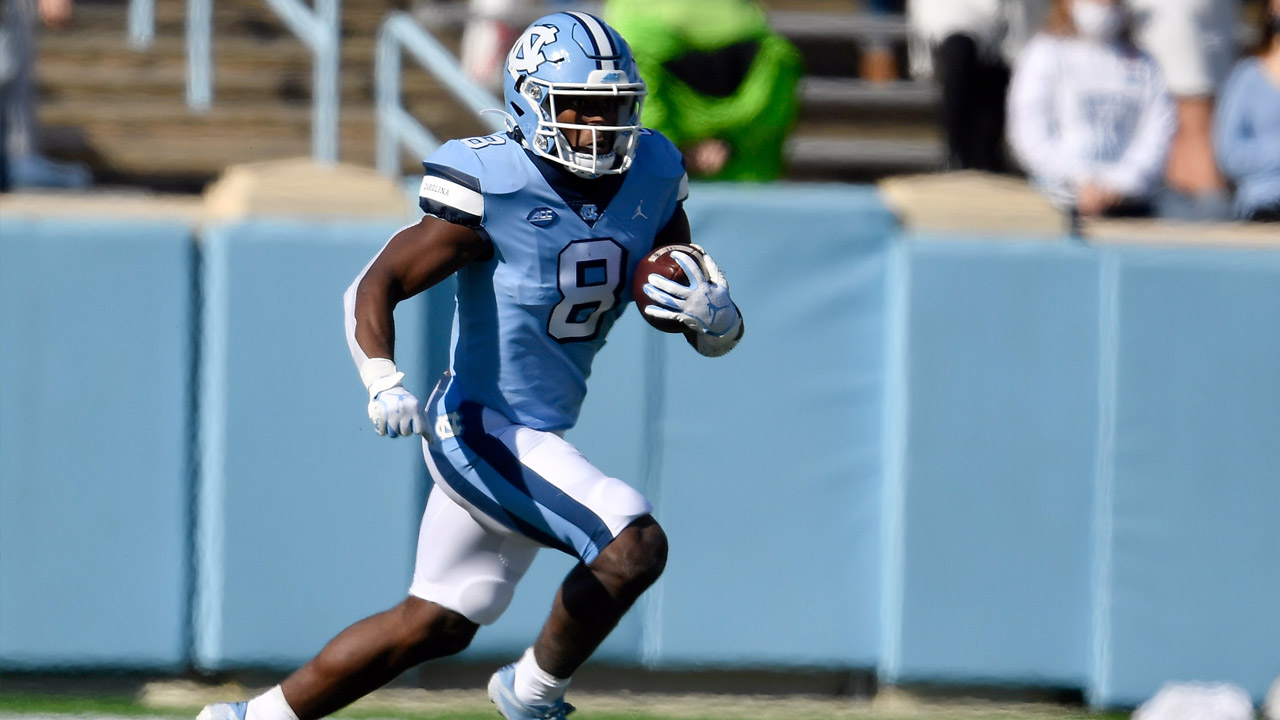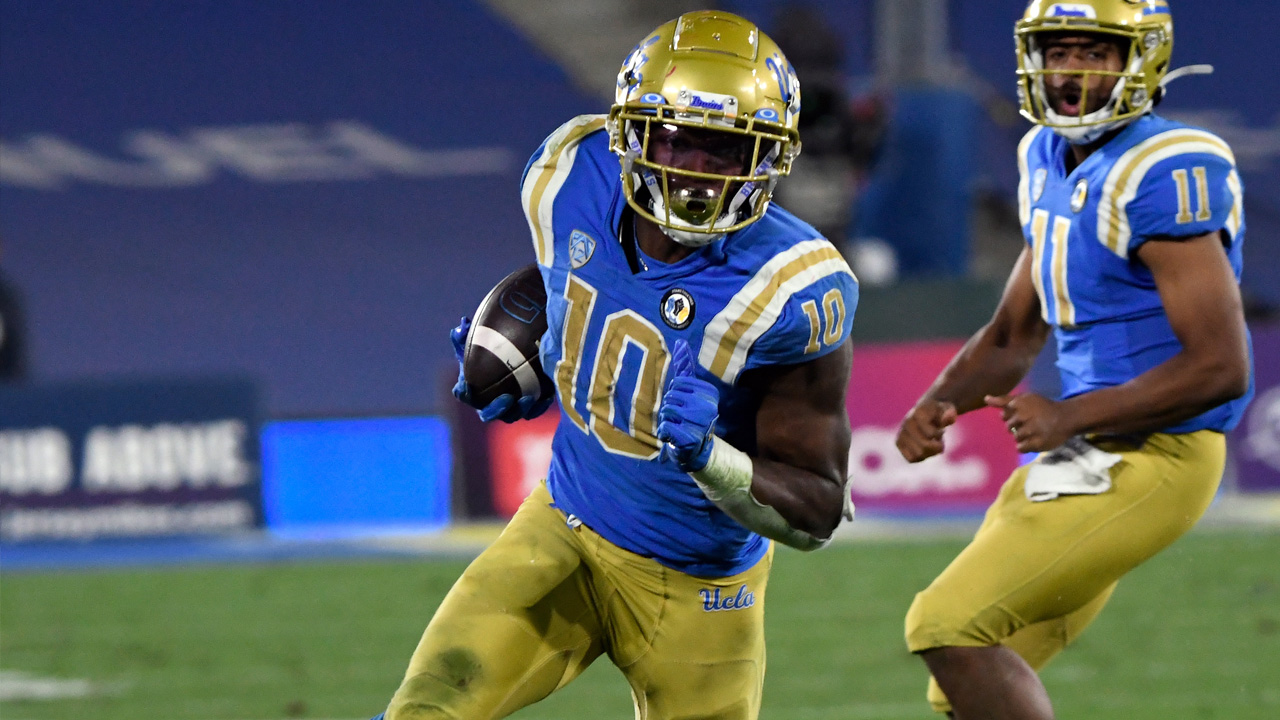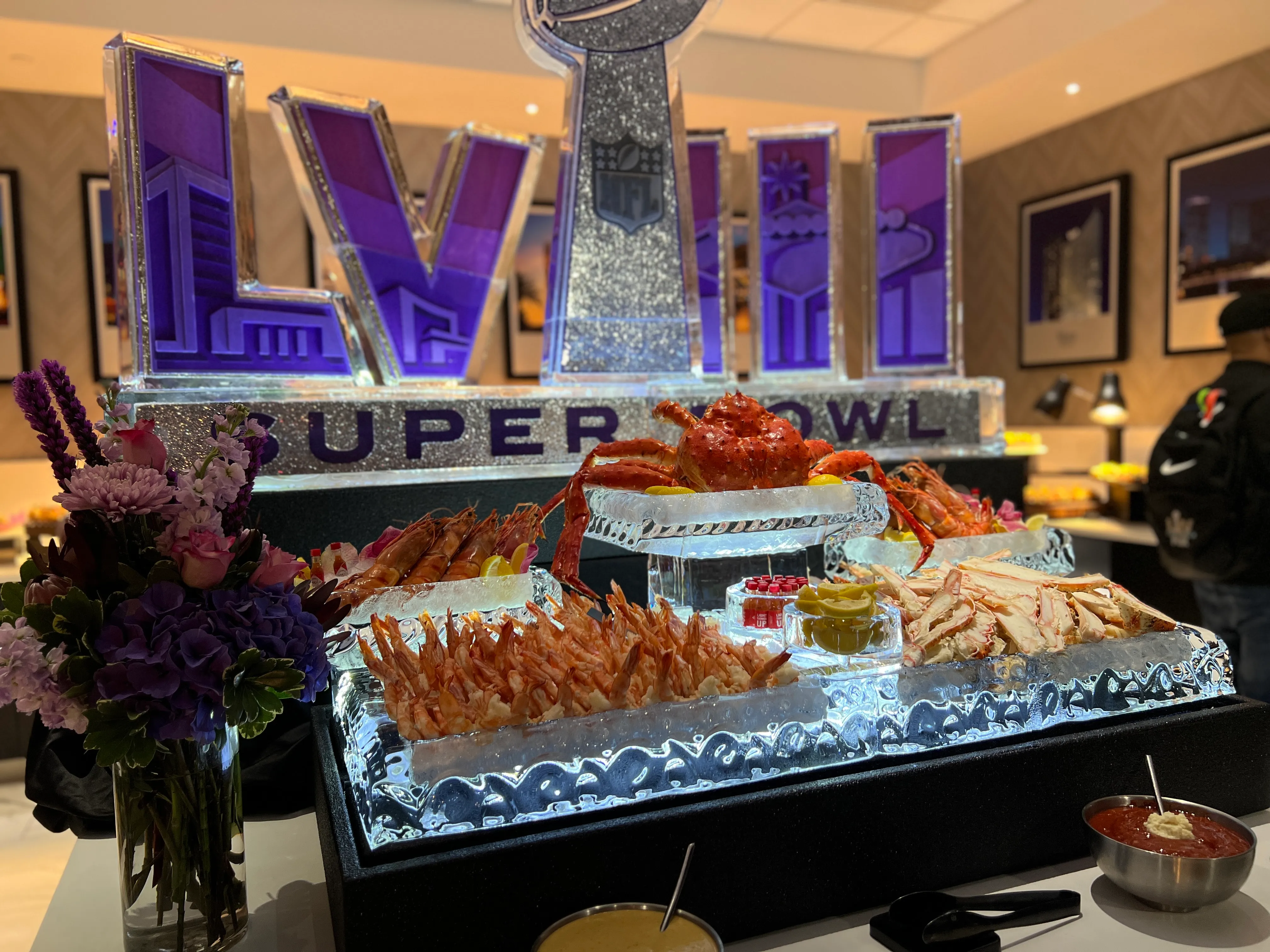Phil Perry's Prototypical Patriots series is all about studying what the Patriots have done to project what they might do. We start the series here this year at the running back spot.

Bill Belichick may not explicitly tell us what he's looking for in draft prospects, but if we study his actions over the course of his two decades with the Patriots, he's given us hints.
It's not a perfect science, of course. We don't have the same kind of background information the Patriots do on potential draftees. We haven't met with them all to understand how they learn or how dedicated they are to their craft. But based on Belichick's track record, we can whittle down the options, which former Belichick assistant Mike Lombardi recently explained is the essence of scouting.
"Most everyone believes scouting is about finding talent when in reality, it’s all about elimination," he wrote for the Athletic. "The quicker a team eliminates a player, the sooner it can focus on the ones who initially fit the criteria."
Running back is a position Belichick has selected 10 times in his tenure as Patriots coach. Going all the way back to his first, JR Redmond in 2000, to Damien Harris in 2019, there are some trends that have emerged.
The most obvious? The Patriots like size. They've never drafted a back checking in under 200 pounds. With early-down runners, they typically look for someone in the 215-pound range. Think Sony Michel (214), Damien Harris (216) and Laurence Maroney (217). But Patriots backs have climbed all the way up to closer to 225 pounds. Think Stevan Ridley (225) and Cedric Cobbs (223).
Even third-down backs have had sturdy builds to help them hold up against NFL punishment as ball-carriers and pass-protectors. James White checked in at 204 pounds in 2014, while Shane Vereen weighed 210 pounds in 2011. Certain Patriots backs have made their way to Foxboro despite being undersized, like Dion Lewis (193) and JJ Taylor (185), but neither was drafted by Belichick.
Patriots backs -- early-down runners or sub backs -- have been good athletes but not necessarily burners. Most posted 40-yard dashes quicker than 4.6 seconds, but not much quicker. Michel (4.54), Harris (4.57) and White (4.57) didn't light up stopwatches. Belichick's fastest backs -- Vereen (4.49), Maroney (4.48) and Redmond (4.48) -- hovered around the 4.5 mark as well. Ridley was a bit of an outlier with a 4.65-second 40. Cobbs ran a glacial 4.72. Speed, it's pretty apparent, is not exactly a priority here. Having adequate agility -- a short-shuttle in the 4.2 range and about a 7.0-second three-cone -- seems to be of greater importance.
The Patriots of course want backs who protect the football, who can protect the quarterback when asked, who can run through contact and create yards on their own, and who can function as receivers if they're going to be asked to play in passing situations.
The prospects we list here, both big backs and sub backs, will be the ones who look like they'll be considered mostly "clean" from a height, weight and speed perspective. (We get into the specifics of what that means in this episode of the Next Pats Podcast.) Because there are no perfect prospects -- and because official testing numbers can be hard to come by without a combine this year -- we leave room for some exceptions. But if this is "all about elimination," then you know there were some tough omissions here as well.
Let's dig in.

Travis Etienne, Clemson, 5-10, 215 pounds
Etienne's frame is almost a carbon copy of Michel's back in 2018. Only Etienne is more explosive. He clocked a 4.41-second 40 at his pro day, a number that might've actually been a tick faster had Etienne not bulked up a bit prior to the showcase. He did not run agility drills, which makes this exercise a tad more difficult, but his combination of size, speed, and lower-body power (128-inch broad jump) is rare. He's a downhill runner with great balance and a still-improving ability to be used in passing situations. The Patriots could certainly make it work with Etienne as an early-down runner, even if the team feels like he's better off shedding a little weight from his pro-day weigh-in. But he's in the conversation to be the first back off the board in April so it's a difficult match to envision.
Najee Harris, Alabama, 6-2, 230 pounds
Though we don't yet have updated testing numbers for Harris, he looks like the best fit for the Patriots in this year's draft class. He checks the box in terms of size. Easily. But he's also something that the Patriots haven't had in some time: a true every-down back. The jobs have been divvied up in New England between early-down backs and sub backs in recent years, but Harris is a do-it-all type. He has the quickness to make people miss when he isn't running (or jumping) over them, and he's a talented receiver. He'll also have no issue holding up in pass protection at the next level. If Bill Belichick wants a big back with Sony Michel going into a contract year, he'll get that and more in Harris. The only issue? Belichick may have to grab him in the second round if he really wants him -- if Harris is even still on the board at that point.
Javonte Williams, UNC, 5-10, 220 pounds
Two things jump out about Williams once you go digging: 1) He runs angry. 2) He only has about 400 total touches on his college resume. Fresh as lettuce for the next level? Should be. With his running style, he may not last long, but the Patriots took Michel and Michel's well-known knee issues in the first round in 2018. Behind a behemoth offensive line in New England, Williams would punish defenders. He could play in the passing game if asked, but he looks more like a back in the Harris mold. We don't have testing numbers on Williams at the moment, but his tape shows a strong, explosive runner. He led the nation with 75 forced missed tackles, per PFF, and his background would indicate he can handle what's thrown at him behind the scenes in Foxboro. He was valedictorian of Wallace-Rose Hill High, and teammate Michael Carter told NewsObserver.com in 2019 that there were three things in life of which he was certain: "Death, taxes and Javonte’s going to be in class."
Trey Sermon, Ohio State, 6-0, 213 pounds
Talk about coming on strong late. In the Big Ten championship and in the College Football Playoff semis, Sermon had 60 carries that resulted in a whopping 24 broken tackles and 524 yards, per PFF. As is the case with many of these prospects, we're still waiting to see how he'll test. But the Oklahoma transfer's tape indicates that while he's not a straight-line speedster, he has enough in terms of agility -- particularly with his frame -- to be in the range of what the Patriots like at the position. Hard runner. Not flashy. And maybe a Day 3 pick? Sounds like a fit.
Kylin Hill, Mississippi State, 5-10, 214 pounds
With a 4.51-second 40-yard dash and a 36-inch vertical at his pro day, Hill proved he has some juice at well over 200 pounds. But here's where we start to get into exception territory, perhaps. Hill's short shuttle run came in at 4.35 seconds and his three-cone time was 7.13 seconds. Another physical back on this list, Hill sticks here because he can catch the football (63 catches over the last three seasons), which gives him some versatility, and because his numbers aren't all that far off from Shane Vereen's (4.49 40, 34-inch vertical, 4.28-second shuttle). The Patriots made Vereen a second-round pick. On Day 3, this SEC product could be a match for New England.
Elijah Mitchell, Louisiana, 5-10, 215 pounds
Mitchell averaged 1,000 yards rushing over the last three seasons and, despite the competition he faced, looks like he'll check plenty of boxes for the Patriots. Not only does he have the stature the Patriots tend to like, but he's a glutton for contact, and did nothing but produce for the Ragin' Cajuns even with competition for carries (we'll get to that in a second). He also caught 46 passes over the last three seasons, and at the Senior Bowl he impressed with his ability to function as a receiver out of the backfield. As a Day 3 option with kicking-game potential, Mitchell would carry some promise in Foxboro.
Trey Ragas, Louisiana, 5-10, 222 pounds
If the Patriots are looking for a pure north-south runner who can bang around between the tackles and function efficiently in short-yardage situations, this could be their guy. Ragas put it in the end zone behind an often-dominant Louisiana offensive line 43 times in 49 career games, including 10 this season. Sharing a backfield with Mitchell, Ragas still racked up 758 yards in 11 games this year (5.8 yards per attempt). In 2019, he broke a tackle on 36 percent of his touches and racked up 457 yards after contact, per Sports Info Solutions. Like Mitchell, we still don't know how he'll test. But, for now, his size, power-running style and production allows him to stay on this list.
Kene Nwangwu, Iowa State, 6-0, 210 pounds
Nwangwu may be a special-teams option for the Patriots as his size isn't necessarily imposing and his receiving chops are far from polished (three grabs in 2020). But as an athlete? At his pro day, he ran a 4.31-second 40, a 6.84-second three-cone and he put together some massive jumps (37-inch vertical, 125-inch broad) That skill set showed up occasionally as a backup runner for the Cyclones. But it could play on a more consistent basis at the next level in the kicking game. The Big 12 Scholar-Athlete of the Year, a Mechanical Engineering major, Nwangwu was one of the top kick-returners in the country this year, averaging 29.3 yards per return last season. Good size, freakish athleticism and kicking-game experience? Easy add here.

Michael Carter, UNC, 5-7, 202 pounds
Carter is the ideal sub back in the Patriots system. Were he and his Tar Heels teammate Williams to arrive as a package deal in New England, hard to believe Belichick wouldn't be thrilled to let them handle the backfield duties for the next several years. Unfortunately for the Patriots, that's probably fantasy-land thinking as Carter will also be off the board in the first few rounds. He bumps right up against what the Patriots have drafted in terms of weight, but he's a hard-nosed pass-protector and he has tremendous juice once he hits the open field with the ball in his hands. His 40 and agility times shouldn't be an issue based on his tape.
Jake Funk, Maryland, 5-10, 205 pounds
This year, Funk means freak. Will he ever turn into a full-time sub back like James White? Hard to project him having that kind of career arc when he had so many injuries at Maryland. He played 25 games in his first two seasons before tearing his ACL in each of the next two years. Last year he played in five games, though, and ran for 516 yards and three scores on just 60 carries (8.6 yards per attempt). Eye-opening production, right? He's also projected to be a core special-teamer at the next level, and he gave teams every reason to believe that'll be the case with his pro day performance: 4.43-second 40, 6.71-second three cone, 4.12-second shuttle, 38-inch vertical, 122-inch broad jump, 22 reps of 225 pounds on the bench. Yikes.
Josh Johnson, Louisiana-Monroe, 5-9, 209 pounds
Let's just get all the backs from non-LSU programs in Louisiana and list them here, why don't we? Turns out they grow their backs big and relatively athletic down in the bayou. Johnson was banged up a bit in 2020, but back in 2019 he racked up 1,298 yards and 11 touchdowns on the ground to go along with 13 catches for 122 yards as a receiver. He's build like a block, which helps him as a pass-protector, but he's agile and has proven he has some legitimate stop-start ability. His shuttle time (4.38) is a tad concerning, but his 40 (4.58) and his vertical (35.5 inches) indicate there's some explosiveness there. He's not a high-end pick, and he'd have to contribute on special teams to have a role in Foxboro, but he might be worth a shot based on what they've drafted in the past.
Jaret Patterson, Buffalo, 5-6, 195 pounds
Patterson would be a bit of an outlier for the Patriots from a weight perspective, but his frame is reminiscent of Dion Lewis'. His play at Buffalo -- Lewis' home town, coincidentally -- would indicate he has some of the shiftiness that Lewis possessed in New England, too. Patterson's shuttle time (4.37) would refute that (Lewis' was 4.18), but this is one of those rare plays-quicker-than-he-tests situations. Patterson's 40 time (4.52) and three-cone drill (7.03 seconds), meanwhile, are in line with what the Patriots like. So too is his level of production. He was a 1,000-yard rusher in each of his three seasons at Buffalo, including an 1,804-yard campaign in 2019 and a 1,074-yard year when he only had the chance to play in six games in 2020. Insanely efficient. It might be a bit of a surprise if Patterson found himself matched up with Lewis' old team on draft weekend since they already have a player running backs coach Ivan Fears calls "Little Dion" in JJ Taylor. But Patterson's hard-charging yet still light-on-his-feet style is one the Patriots would seem to appreciate.
Ezra Gray, Alabama State, 5-9, 185 pounds
OK here we are back in a spot where we're going to take a deep breath and make an exception. Gray's size isn't going to be enough for most backs in the Patriots system. But his frame might be able to carry a few more pounds once he gets into an NFL strength program. And, man, does he have speed to burn. He reportedly clocked a 4.31-second 40 and ran a 10.5-second 100 meter dash in high school. That shows up on tape. His quickness jumps off the screen, too. Even on a field with great athletes, he's raised eyebrows as a returner. Just watch his returns against Auburn and Florida State. Could the Alabama State captain potentially provide the kind of impact Tarik Cohen (5-6, 179) did coming out of North Carolina A&T in 2017? Gray, whose season is taking place this spring, ran for 195 yards and three touchdowns on 23 attempts against Jackson State, coached by Deion Sanders. "A lot of people didn't even know Ezra Gray," Sanders said after. "I'm sure the whole country knows who he is now because the kid balled, and I'm proud of him, man." Gray has a 4.0 GPA and was named a Campbell Trophy semifinalist -- also known as the academic Heisman -- which serve as a couple more reasons as to why he deserves to be on this list.




